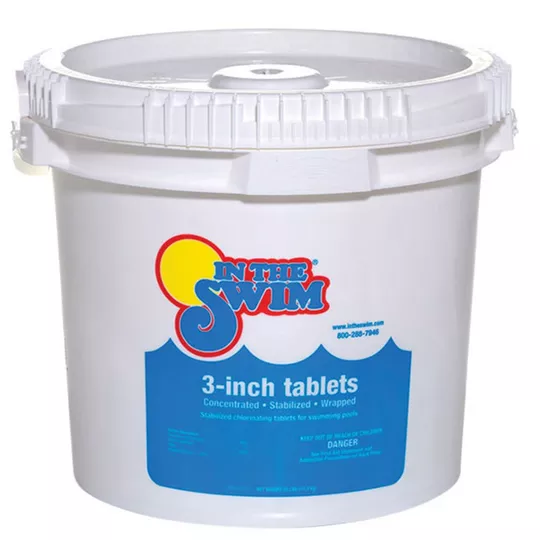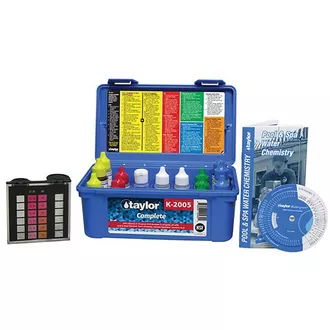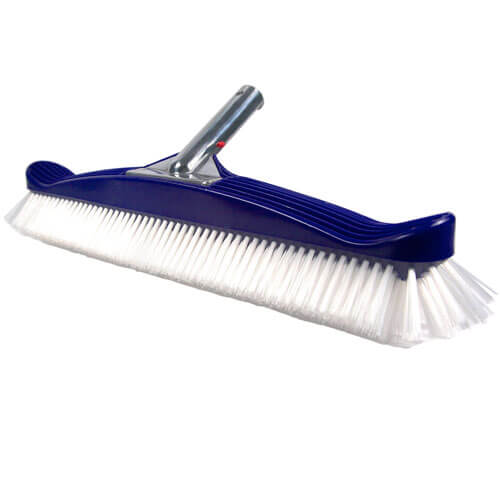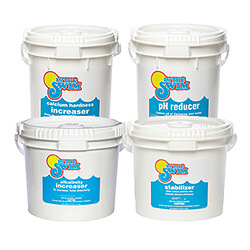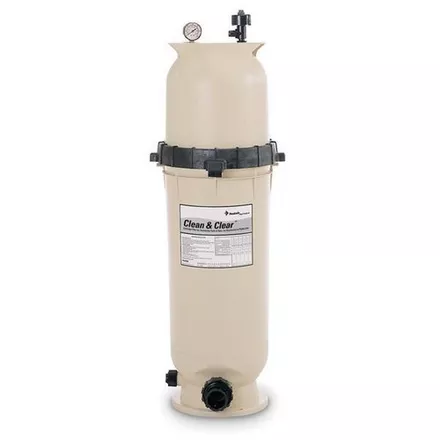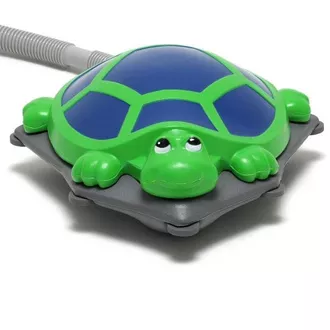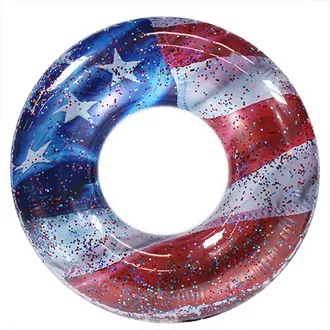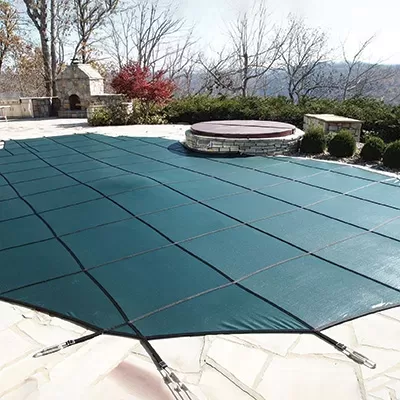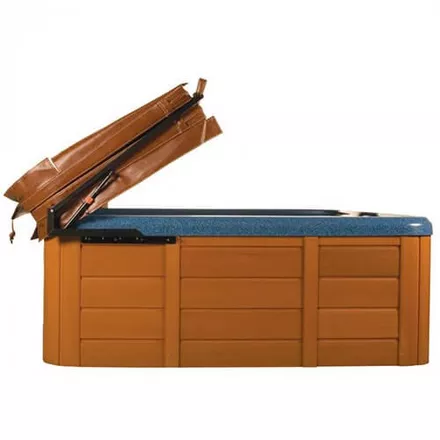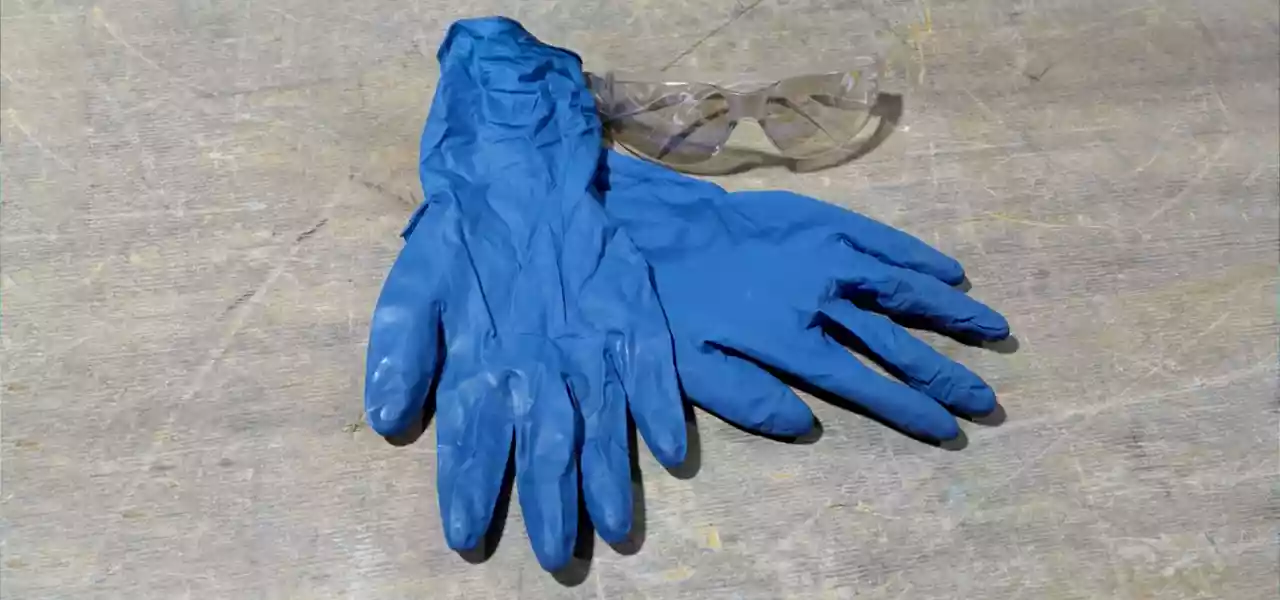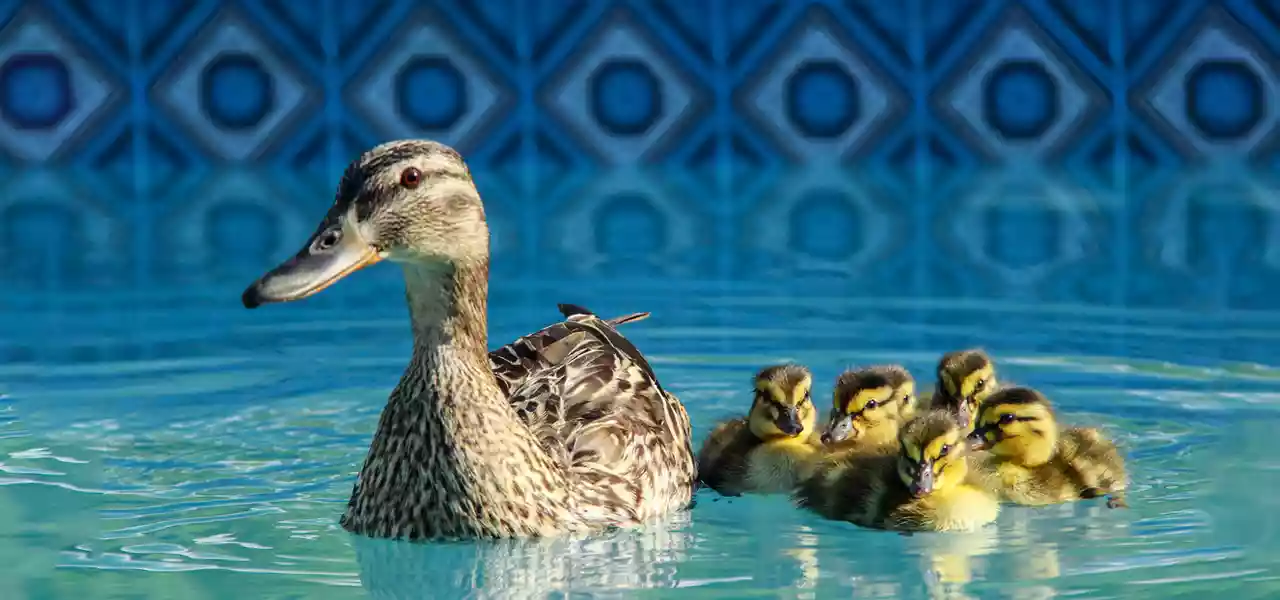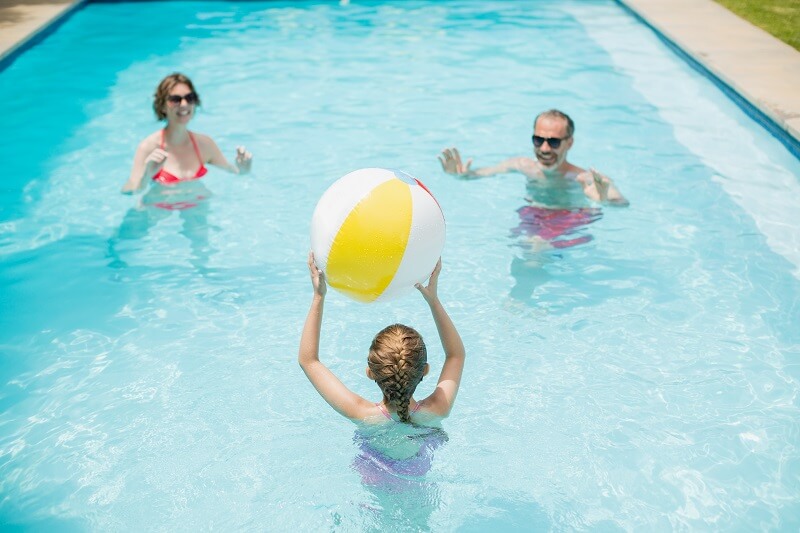
Yesterday I received the happy news that one of my co-workers has joined the growing army of residential pool owners, now over 10 million strong. She came to me because although she and her husband were very excited about pool ownership, and the pool inspection turned up no problems – they were apprehensive about pool maintenance – and other unknowns.
Every day, thousands of new pool owners are created, when they sign on the dotted line to purchase a new home – with a swimming pool in the backyard. So, the question is valid – how do I take care of this new pool in the backyard?
For all of you who are now suddenly pool owners – welcome. After the dust settles, you’ll see that most pools can be maintained without demanding too much of your time or money. If you are spending more than an hour per week in pool maintenance duties, that is unusual, and there are ways to correct that.
Understanding your Pool Water Chemistry
The first thing I tell all pool owners is that you want to master your pool chemistry and understand your pools’ particular personality in regards to water chemistry. To do this, you will need two things, a good test kit such as the Taylor Complete test kit, and a spiral notebook to use as a chemistry log. You don’t have to keep a test log if you’d rather not geek out that hard, but do buy a full-featured test kit. Test Strips are not as accurate, and smaller test kits won’t test all of the important chemical levels.
The recommended pool chemical levels are:
- pH: 7.2-7.6
- Total Alkalinity: 80-120 ppm
- Calcium Hardness: 200-400 ppm
- Cyanuric Acid: 30-50 ppm
- Free Chlorine: 1-2 ppm
But if you want to really geek out, perform a regular Langelier Saturation Index or LSI calculation. The math is a rather long formula that I forgot long ago, because there are several LSI calculators available online. I like the Pentair LSI calculator; just enter your alkalinity, cya, hardness and pH levels, along with the current water temperature, to discover if your pool has a tendency towards scaling or staining, and what adjustments can be made to establish equilibrium.
“How often do I need to add chlorine?” is a question I always hear from new pool owners, and was not surprised when my co-worker had it on her list of questions for me. The answer is “Always – constantly and consistently, without a lot of peaks and valleys.” You always need chlorine in the water, 24/7, to suppress the bio-matter that would bloom in the absence of it. Most pool owners use 3″ chlorine tablets as the daily sanitizer, using enough tablets to maintain the 1-2 ppm of free chlorine, replacing them when they dissolve.
“How often do I need to shock the pool?” is the next question I was asked, and I explained that there are generally 3 or 4 reasons to shock the pool. I like to use the mnemonic A-B-C, as the reasons to shock the pool.
A: Algae – granular chlorine, aka “pool shock” and a strong brush is the best way to kill pool algae, whether you have isolated spots of algae, or an algae bloom over the entire pool.
B: Bacteria – to kill viruses and germs, and pathogenic bacteria, granular chlorine is used to raise chlorine levels to 10, 20 or even 30 ppm. This ‘super-chlorinates’ the pool, and kills all cellular matter, or dis-infects the pool. You can’t usually ‘see’ bacteria, but it can thrive in poorly maintained pools, after high pool use, or animals, dirt and debris.
C: Chloramines – When free chlorine combines with other molecules, it puts off strong chlorine odors and turns swimmer’s eyes red. Raising the level of chlorine very high can reach a threshold where all molecular combinations are broken apart, destroying chloramines, aka combined chlorine.
Another “C” for shocking the pool is to clear up Cloudy Water. If everything is going great and you have none of those issues, shock the pool monthly, just to be on the safe side, and to breakdown organic and non-organic material in the water, for a cleaner and clearer pool.
What Chemicals Do I Need to Buy?
There may be an existing stock of pool chemicals, left by the former owner? If not, you will need chlorine tablets and granular chlorine, aka pool shock. Unless your pool has a salt water chlorine system, then you will just need the pool shock for the occasional shock treatment.
You also will need pH increaser and perhaps pH decreaser, and at some point may need alkalinity increaser, calcium hardness increaser or cyanuric acid increaser, aka chlorine stabilizer. Many pools also benefit from treating the water with Clarifiers, Algaecides, and for stain prevention, using a sequestering agent or stain & scale control chemical.
Understanding your Pool Equipment
Your Pool Pump is the heart of your circulation equipment, pulling water from the pool skimmer and main drain, and pushing it through the filter, heater and chlorinator, and then back to the pool through the wall returns. Your pump has a small strainer basket to catch larger debris, smaller debris passes through and is trapped by the Pool Filter, which is cleaned or backwashed regularly, to remove the trapped dirt and restore flow.
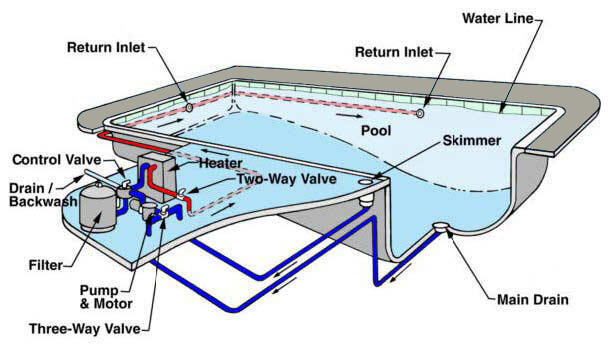
When the filter Pressure Gauge is 7-9 psi higher than the clean, start-up pressure, that is when you need to either backwash (sand and DE filters) or remove the filter cartridges for a good hosing down. Higher than normal pressure indicates a dirty filter, and lower than normal pressure means the pump, skimmers or impeller is clogged.
Pool Heaters, if you have one, are placed after the pool heater, and warm the water 1-2° with each pass of water through the heater. Chlorinators are installed after the pool heater, for using 3″ tablets or sticks, which can also be used in a floating chlorinator, aka chlorine floater.
Pool Cleaners: The final piece of equipment that some pools have is an automatic pool cleaner. My coworker actually has an in-floor pool cleaner system, with pop-up heads on the floor that pop-up and spray water in a sequence. The idea is that it pushes all of the dirt and debris to the drain and skimmer. In this case, as in many pools with in-floor cleaners, a small pile of debris gathers in one corner of the deep end. This can be brushed with the Pool Brush to the drain, or with a little practice, you can scoop it up with a Leaf Rake.
For pools with the roving type of pool cleaner, these may have a larger learning curve, and require a bit more maintenance, to ‘clean the cleaner’. Automatic Cleaners do the vacuuming, but you still have to ’empty the bag’, and replace certain wearable cleaner parts in a timely fashion.
Daily Tasks
- Look & Listen – note the water color and clarity, water movement, and the water level.
- Check the flow inside the pump and listen for a normal sound to the pump.
- Inspect filter pressure gauge, and activity of the pool cleaner or returns.
Weekly Tasks
- Cleaning Pool – empty baskets and debris bags, brush and skim surface.
- Chemical Test & Balance – complete water tests for pH, alkalinity, calcium, cyanuric, chlorine.
- Add Chlorine Tablets – to the chlorinator or floater, for constant and consistent chlorine levels.
- Add other Water Balance chemicals and accessory or supplementary pool chemicals used.
Monthly Tasks
- Shocking the Pool
- Scrubbing Tile and Skimmers
- Pool Filter Cleaning
Seasonal Tasks
- Deep Filter Cleaning – Pool Filter Cleaner once per year to remove filter clogging oil and scale.
- Pool Cleaner Tune-Up – pool cleaners need annual check-ups and replacement of wearable parts.
- Covering & Closing – for pools in snowbelt areas, you’ll need a winter cover and winter supplies.
And there’s more! You may have equipment or scenarios not covered here. Use our search bar below or our categories on the left nav – to find out about your particular pool equipment or water chemistry situations.

